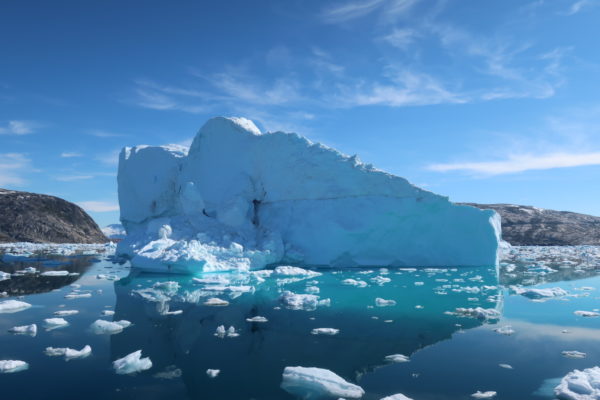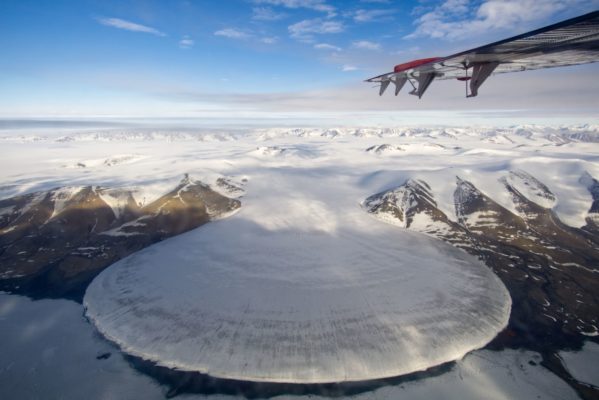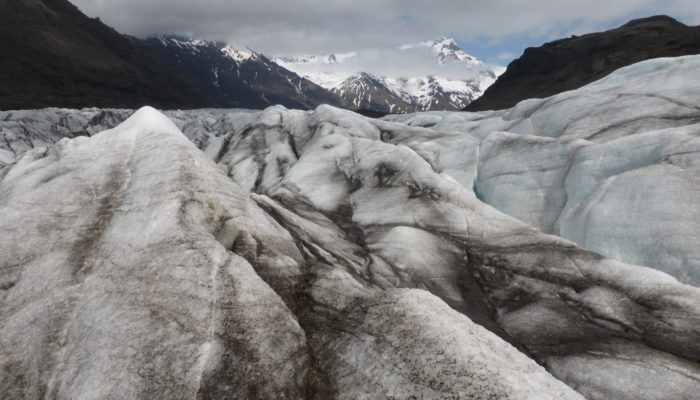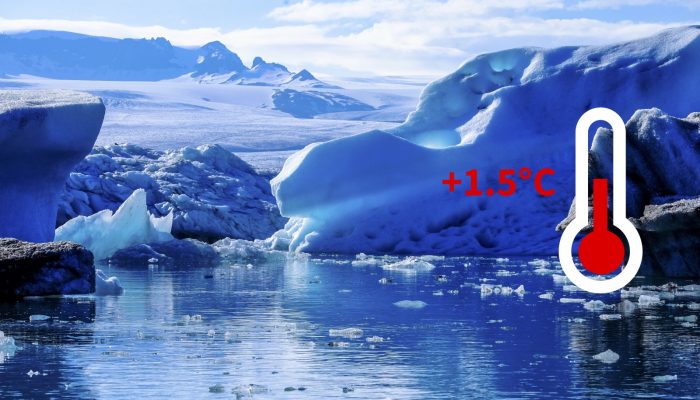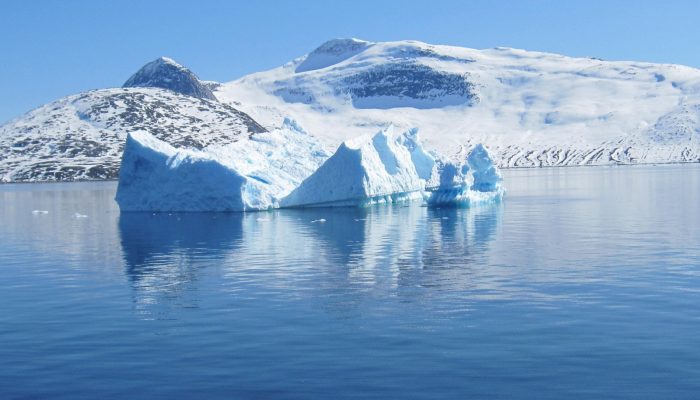Icebergs are ubiquitous in Greenland’s fjords, melting and releasing freshwater as they float towards the open ocean. The amount of freshwater released from these icebergs can be vast – the equivalent of around 50,000 Olympic swimming pools per day in some fjords. New research reveals that this freshwater causes fjord currents to speed-up, which can actually increase the amount of heat delivered t ...[Read More]
Did you know… that you can read the edge of Greenland’s ice as an open book?
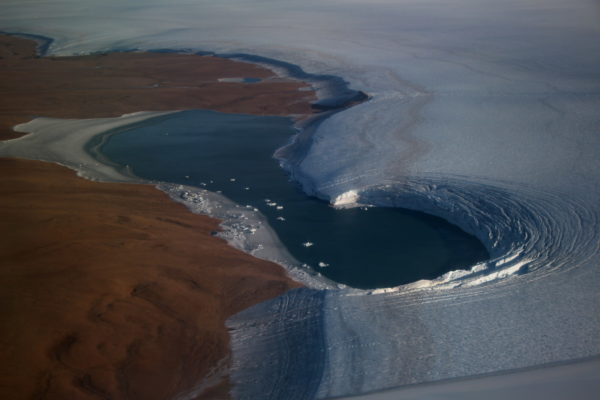
Scientists struggle to get ice samples from the depths of glaciers where fundamental pieces of information about the climate of Earth are stored. But in many places around the periphery of the Greenland Ice Sheet, you don’t need to drill a deep ice core to obtain ancient ice, you can simply walk across the ice sheet’s margin and look at the layered ice surface. There you can read the ice as though ...[Read More]
The foot of a glaciated mammoth? No… A glacier!
Ice is a viscous fluid: it flows but slowly, reaching up to 100 m/yr for the fastest flowing ice. That’s 0.00001 km/hr, so you’d never see it with the naked eye. But what influences the morphology of the glaciers is the shape of the topography that lies underneath them. Elephant Foot Glacier, shown above, aptly named for its shape, is a textbook-example of a piedmont glacier. These types of glacie ...[Read More]
Water plumes are tickling the Greenland Ice Sheet
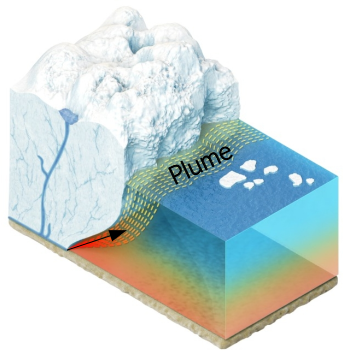
7 meters of sea-level rise – what you would get if the whole Greenland Ice Sheet melted. But the tricky question is: how much of this ice will be melted in the next decades, and how fast will it occur? This piece of information is critical in order to plan for present and future populations living in coastline areas, all around the world. How much and how fast can the Greenland Ice Sheet melt ? In ...[Read More]
Cryo History – How airborne glaciologists measured the movement of glaciers before the satellite era
Recent work published in my department at the Geological Survey of Denmark and Greenland (GEUS) focused on solid ice discharge into the ocean from the Greenland Ice Sheet from 1986 to 2017 (Mankoff et al. 2019). Solid ice discharge is the ice that is lost from a glacier as it flows towards the coast and eventually breaks off as icebergs into the ocean (i.e. calving). Solid ice discharge is an impo ...[Read More]
Cryo-adventures – Behind the scenes of cryo-fieldwork
As the Arctic is warming faster than the global average, Arctic glaciers are rapidly melting. My research is about the fate of glacial organic carbon when the ice containing it melts. To investigate these processes, I travelled to several glaciers, an activity full of challenges… and rewards! My research Glacier ice covers about 11% of Earth’s land surface, and contains within it a globally ...[Read More]
Image of the Week – The GReenland OCEan-ice interaction project (GROCE): teamwork to predict a glacier’s future
The GROCE project, funded by the German Ministry for Education and Research (BMBF), takes an Earth-System approach to understand what processes are at play for the 79°N glacier (also known as Nioghalvfjerdsfjorden), in northeast Greenland. 79°N is a marine-terminating glacier, meaning it has a floating ice tongue (like an ice shelf) and feeds into the ocean. Approximately 8% of all the ice contain ...[Read More]
Image of the Week – What’s Hot in the Cryosphere? A 2018 review
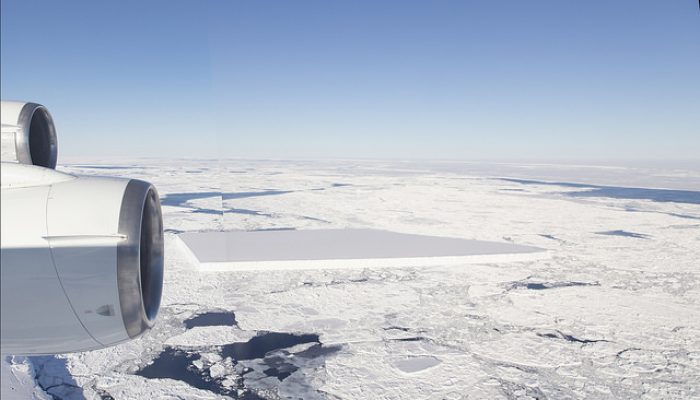
Every year, humanity understands more and more about a remote and unforgiving component of the Earth system – the cryosphere. 2018 has been no exception, and in this blog post we’ll take a look at some of the biggest scientific findings of cryospheric science in 2018. We will then look forward to 2019 and beyond, to see what the future holds for these rapidly changing climate component ...[Read More]
Ice-hot news: The cryosphere and the 1.5°C target
Every year again, the Conference of Parties takes place, an event where politicians and activists from all over the world meet for two weeks to discuss further actions concerning climate change. In the context the COP24, which started this Monday in Katowice (Poland), let’s revisit an important decision made three years ago, during the COP21 in Paris, and its consequences for the state of the cryo ...[Read More]
Image of the Week – Greenland’s fjords: critical zones for mixing
One of the most challenging research questions to address in the Arctic is how freshwater discharge from Greenland’s largest glaciers affects the biogeochemistry of the ocean. Just getting close to the calving fronts of these large marine-terminating glaciers is difficult. Fjords, hundreds of kilometers long and full of icebergs which shift with the wind and roll as they melt, make the commute a l ...[Read More]

